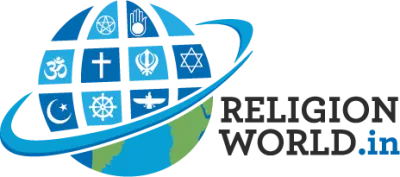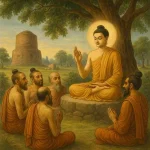UNICEF works with religious communities of all faiths on issues affecting children
These include:
- A fundamental belief in the dignity of the child.
- An emphasis on the family as the best place for bringing up children.
- High priority given to children and the idea that all members of society have rights and duties towards them.
- A holistic notion of the child and a comprehensive understanding of his or her physical, emotional, social and spiritual needs.
Aside from the potential benefits that religious actors bring to partnerships, spirituality and religion can have a profound influence on children’s development and socialization and have the potential to reinforce protective influences and promote resilience.
The beliefs, practices, social networks and resources of religion can instill hope, give meaning to difficult experiences and provide emotional, physical and spiritual support. When child rights efforts are grounded in the protective aspects of religious beliefs and practices in a community that encourages and enriches the spiritual and religious life of each child, the impact can be far-reaching.
In a country like India, faith plays a big part in constructing cultural, sociological and personal behaviour. Around 99 percent Indians choose to label themselves as belonging to a particular religion according to Census reports. Faith has a critical role to play in the advancement of basic human rights for children. According to the Census, over 99 percent Indians choose to label themselves as belonging to a particular religion.
Moreover, with a multitude of faiths like Hinduism, Islam, Christianity, Sikhism, Jainism, Buddhism and many more tribal faiths, India is a country made of people with strong identification to their faiths.With their extraordinary moral authority and power, faith-based organisations (FBOs) are able to influence thinking, foster dialogue, and set priorities for members of their communities.
Child protection
Why partner with religious communities for child protection?
Violence against and exploitation and abuse of children violate the fundamental tenets of the world’s major religions, which speak to the inherent dignity of all human beings.
In every setting, religious communities provide care and support for their members, particularly the poorest, most marginalized and most vulnerable to violence, exploitation and abuse. They often prioritize the educational needs of vulnerable children and assist with shelter and access to needed services, including medical and legal support. They provide counselling and spiritual guidance and speak out on behalf of those who are powerless to advocate for themselves. They can be powerful allies in protecting the most vulnerable children.
In emergency settings, where children face particular protection concerns including displacement or recruitment into armed forces or groups, religious communities may have some of the only remaining structures and resources. They are called by their faith traditions to attend to those most in need and will remain long after the emergency is deemed to be over from an international perspective. They thus provide the foundations on which to build long-term protective environments.
What can religious communities do to protect children?
- Interpret child protection principles in a language that is meaningful and appropriate to their communities.
- Use teachings from religious texts that emphasize child protection in worship services, religious education and during special religious events such as holidays and rites of passage.
- Speak out against all forms of violence against children, including sexual abuse of girls and boys, in their communities and beyond.
- Clarify that cultural practices harmful to children are not part of religious beliefs and practices and advocate for their abandonment.
- Develop and implement codes of conduct regarding appropriate interaction with children within their places of worship, organizations, institutions (including schools and orphanages) and community associations, including reporting and response mechanisms for child abuse.
- Promote education and training on all forms of violence and good practice in child protection for families, teachers and others in the community, using religious texts and teaching to promote positive discipline and respect for the inherent dignity of all children.
- Lend their moral influence to campaigns addressing child protection issues and advocate for favourable changes in policy and legislation to strengthen legal and monitoring systems to better protect children. Religious communities can also facilitate or assist in community monitoring mechanisms.
- Mobilize communities to take actions to protect children and assess their needs.
Art of Living
In the second phase, state-level Youth Summits were organized under the banner of VFABI in Punjab, Uttar Pradesh, and Gujarat, where more than 15,000 student/youth leaders pledged to act to support the girl child in India. Acts of Change emerged from across the country as a follow up to this outreach.
Global Inter-faith WASH Alliance
GIWA was co-founded in India and the India chapter is the world’s first such operational alliance. The launch of GIWA India through the ‘Worship to WASH Summit’ to be held in Rishikesh in December 2014, will mark the start of a new social movement to end open defecation; one driven by senior religious leaders to eventually reach millions of homes. This event will also see a women’s leader summit to harness their collective reach and influence.
Above all GIWA is determined to see action rather than endless procrastination and talk









